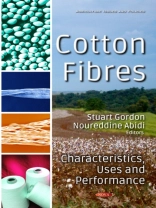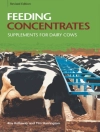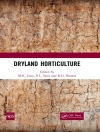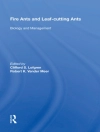Cotton’s importance as a crop and as a textile fibre is still significant. However, its importance has been and will continue to be seriously challenged by the growth in consumption of man-made fibre, particularly polyester. This book is divided into three parts. The first part, covering seven chapters, describes the chemical and physical properties of cotton fibre. These chapters focus on the differences between cotton and polyester fibre properties, and highlight areas researchers will need to pursue to keep cotton competitive. Two lesser discussed properties receive attention: Cotton fibre’s wax layer and cotton cellulose’s glass transition temperature. The hydrophobic wax layer that protects cotton during mechanical processing and aids the dispersal of its seed by water, has been central in the development of the spinning technology used by cotton and polyester fibre alike. The wax provides lubrication between the fibre surface and the processing surfaces during opening, carding and spinning. The chapter on cotton cellulose’s glass transition temperature introduces the less appreciated concept that cotton’s cellulose can be plasticized at particular temperatures and moisture contents, wherein cotton’s mechanical properties, e.g. elongation to break, can be improved. The range of fibre property values and the variation found in cotton stand as markers for future researchers to improve by way of plant and crop management, breeding (including genetic modification), and chemical processing. Long standing objectives include longer, stronger and finer fibre, which all translate to better looking and performing yarn and fabric. However, properties that give cotton fabric improved resilience, drape and dyed-colour appearance also stand as objectives to improve cotton’s competitiveness. The second part of the book introduces uses of cotton that are less considered; cotton nonwovens, bandages impregnated with natural anti-microbial agents and cellulose aerogels are products with excellent potential, and deserve further research and development. Standard textile products are not discussed in this section. These are discussed in the third and final part of the book. The final four chapters focus on the current performance of cotton in different apparel and home furnishing markets, in the commodity marketplace, and in spinning and dyeing. These final chapters point to a challenging future for cotton if the industry and its researchers curtail their pursuit of better crop productivity, fibre quality, processing technology and product development.
Noureddine Abidi & Stuart Gordon
Cotton Fibres [PDF ebook]
Characteristics, Uses and Performance
Cotton Fibres [PDF ebook]
Characteristics, Uses and Performance
Acquista questo ebook e ricevine 1 in più GRATIS!
Formato PDF ● Pagine 354 ● ISBN 9781536109306 ● Editore Noureddine Abidi & Stuart Gordon ● Casa editrice Nova Science Publishers ● Pubblicato 2017 ● Scaricabile 3 volte ● Moneta EUR ● ID 7228130 ● Protezione dalla copia Adobe DRM
Richiede un lettore di ebook compatibile con DRM












